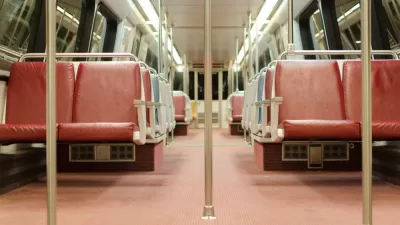Proof from the Census Bureau's latest American Community Survey on commuting by auto shows that millennials, if they live in cities, do indeed drive less. Census researcher Brian McKenzie describes the finding in the bureau's blog, Random Samplings.

The August 13 survey, "Who Drives to Work? Commuting by Automobile in the United States: 2013," and referenced here, has 28 pages (PDF) of data to pore over. However, a quick read can be found in Brian McKenzie's blog.
"Some of the most notable recent changes in commuting have occurred among younger workers, particularly those living in cities," writes McKenzie, also the author of the Census Bureau report.
- In 2013, about 74 percent of workers ages 16 to 24 living in principal cities commuted by automobile, compared with about 80 percent of the oldest workers.
- Workers between the ages of 25 and 29 living in principal cities showed the largest auto commuting declines since 2006, at about 4 percentage points. [See interpretation by Emily Badger below]. This is also the group that was least likely to have a vehicle at home in 2013.
By one definition, "the Millennial cohort consist(s) of individuals born between 1982 and 2004. Google defines a millennial as "a person reaching young adulthood around the year 2000; a Generation Yer."
For more data, go to the survey, page 6: DIFFERENCES IN AUTOMOBILE COMMUTING BY AGE (PDF)
Rapidly evolving transportation options and changing demographics across communities raise several questions about current and future travel patterns. Young people show some deviation from several long-standing travel-related indicators, including higher rates of commuting by travel modes other than private vehicles... To what extent these deviations may become a sustained pattern remains unclear.
McKenzie's work is meticulously footnoted, including references to a U.S. PIRG report posted here.
Writing in The Washington Post Wonkblog, Emily Badger emphasizes that the decline in auto commuting among millennials applies to those "who live in the principle city of each metropolitan area — so, not the suburbs."
A four-point decline [see second bullet above] may not sound like much (it means about 76.7 percent of these young urban workers still commute by car). But since 2006, the rate of their decline in driving is about four times greater than the national average. And, as the [below] chart shows, changes in commuting patterns happen gradually over many years.
Census Bureau: Figure 3, Random Samplings
FULL STORY: Majority of Americans Drive to Work, But Less so for Urban Millennials

Study: Maui’s Plan to Convert Vacation Rentals to Long-Term Housing Could Cause Nearly $1 Billion Economic Loss
The plan would reduce visitor accommodation by 25,% resulting in 1,900 jobs lost.

North Texas Transit Leaders Tout Benefits of TOD for Growing Region
At a summit focused on transit-oriented development, policymakers discussed how North Texas’ expanded light rail system can serve as a tool for economic growth.

Why Should We Subsidize Public Transportation?
Many public transit agencies face financial stress due to rising costs, declining fare revenue, and declining subsidies. Transit advocates must provide a strong business case for increasing public transit funding.

How to Make US Trains Faster
Changes to boarding platforms and a switch to electric trains could improve U.S. passenger rail service without the added cost of high-speed rail.

Columbia’s Revitalized ‘Loop’ Is a Hub for Local Entrepreneurs
A focus on small businesses is helping a commercial corridor in Columbia, Missouri thrive.

Invasive Insect Threatens Minnesota’s Ash Forests
The Emerald Ash Borer is a rapidly spreading invasive pest threatening Minnesota’s ash trees, and homeowners are encouraged to plant diverse replacement species, avoid moving ash firewood, and monitor for signs of infestation.
Urban Design for Planners 1: Software Tools
This six-course series explores essential urban design concepts using open source software and equips planners with the tools they need to participate fully in the urban design process.
Planning for Universal Design
Learn the tools for implementing Universal Design in planning regulations.
Ascent Environmental
Borough of Carlisle
Institute for Housing and Urban Development Studies (IHS)
City of Grandview
Harvard GSD Executive Education
Toledo-Lucas County Plan Commissions
Salt Lake City
NYU Wagner Graduate School of Public Service





























